JVC DLA-X70 Review
JVC DLA-X70
JVC finally introduces us to its ‘kind of’ 4k resolution projection technology, courtesy of the rather marvellous DLA-X70
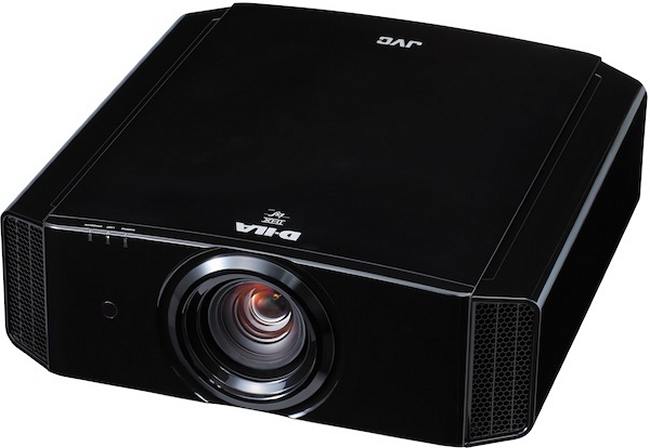
Verdict
Pros
- Stunning 2D pictures
- Great build quality
- Good 3D pictures
Cons
- Some crosstalk with 3D
- Slightly more expensive than last year’s equivalent model
- 3D glasses not the best
Key Specifications
- Review Price: £6993.60
- D-ILA projector
- Active 3D technology
- 70,000:1 native contrast ratio
- ISF and THX certified
- 1200 Lumens brightness
OK, movie fans, brace yourself: the 4k resolution revolution starts here. Well, kind of.
Sat on our straining projector stand is JVC’s DLA-X70. The arrival of any new JVC home cinema projector is usually a cause for celebration. But this one is especially welcome – or at least interesting – because it claims to deliver a 4K pixel count. Um, but it can’t take 4k sources, and doesn’t use any upscaling technology. Confused? So were we at first. But actually it’s not all that complicated once you get into it.
Making the “4k” claims possible is a proprietary technology called e-Shift, which JVC has developed with forward-thinking Japanese broadcaster NHK. What this technology does is introduce a device between the main optical array and the lens that produces a slightly offset copy of the source full HD image, with the copy positioned half a pixel upwards and left of the original image.
Combining these two images back together again essentially doubles the number of pixels in the image that finally emerges through the projector’s lens – despite the fact that there’s no processing in sight.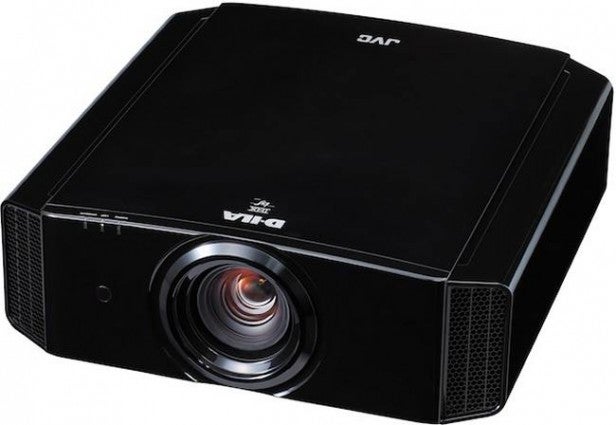
This does not mean that the JVC DLA-X70 is actually producing a 4k picture in the same way that the imminent Sony VW1000ES projector will; you’re not getting 4k pixels of totally separate image data. Indeed, the X70 is unable to receive native 4k signals. But what e-Shift certainly can and does do is deliver the same sort of image/pixel density that you get with a ‘true’ 4K image, and that in itself has the potential to deliver significant benefits in terms of both image brightness and perceived resolution, especially where contoured edges are concerned.
The JVC DLA-X70 predictably doesn’t disappoint with other areas of its spec, either. The single biggest selling point of JVC’s D-ILA technology is its contrast performance, which here results in a mind-boggling 70,000:1 native contrast ratio, with the native bit meaning that it doesn’t need to resort to any auto-iris, brightness-adjusting trickery like all other non-DLP projectors do. This means the X70‘s image can look completely stable and consistent even during dark scenes in a way just not possible with even the best auto-iris projectors.
The JVC DLA-X70 also boasts a decent brightness output of 1200 Lumens. This isn’t a rise on last year’s DLA-X7, but experience with that model suggests that it should be bright enough to ensure that the projector’s active 3D pictures still look reasonably dynamic.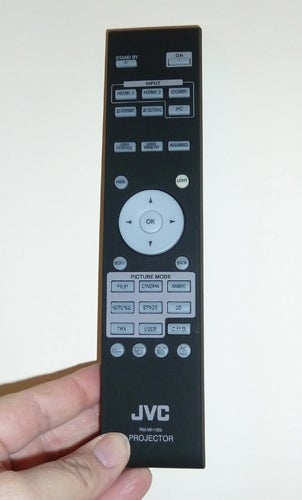
As with previous JVC 3D projectors, to make the JVC DLA-X70 3D-capable, you need to attach an external transmitter. This little box is flimsily built, but we didn’t suffer any connection glitches with it throughout our tests. The transmitter and two pairs of glasses are included in the price.
When it comes to connections, the X70‘s highlights are two HDMIs, a component video input, a D-Sub PC port (something the entry-level, non-e-Shift JVC X30 projector does not have), and a suite of jacks to aid the X70’s installation into a full home cinema system: an Ethernet port, a 12V trigger jack, an RS-232 control port, and a hard remote control port.
The X70 is extremely easy to set up, thanks to its provision of silky smooth and very accurate motorised zoom, focus, and vertical/horizontal image shifting. Built in test screens are provided to help get the picture’s size and focus exactly right.
In-depth tinkerers will also find a full if slightly fiddly colour management system, as well as extremely adjustable noise reduction, gamma control and white balance tools. There’s also the option to use JVC’s Clear Motion Drive processing – though this makes images look a touch too unnatural for our tastes.
Kicking off the testing phase of the review with 2D, the JVC DLA-X70 simply blew us away, to be honest. We’ve already been deeply impressed this year by the 2D performance of the Sony VW95 projector at the same sort of price level – and certainly that model still deserves massive plaudits for the immense distance it has come from its 2011 predecessor. But for us, the X70’s 2D pictures set the bar even slightly higher.
The first thing that struck us, as usual with D-ILA technology, is the image’s phenomenal contrast range. Black levels are as near to perfect as we’ve seen on a projector costing less than five figures. Yet because they’re achieved without the need for a dynamic iris, the inkiest blacks can be joined in the same frame by punchy colours and potent peak whites.
We’re not talking here, it must be said, about dynamism levels to match what a much more expensive projector like the Sim2 Nero 1 or, especially, Sim2 Lumis 3D-S might manage. But certainly the projector does a good job for its price of putting to bed old concerns about movie-optimised D-ILA systems not being able to get particularly bright. Crucially, there’s also enough brightness in the image to ensure that the projector never feels at all short of shadow detailing in dark areas.
Once you’ve managed to see past the impact of the JVC DLA-X70’s deliriously good contrast performance, it’s the e-Shift technology that next grabs your attention. For you really can appreciate its presence in almost every frame of an HD image, partly in the flawless look to contoured edges but mostly in the way the image genuinely looks crisper and slightly more detailed than a non e-Shifted image. 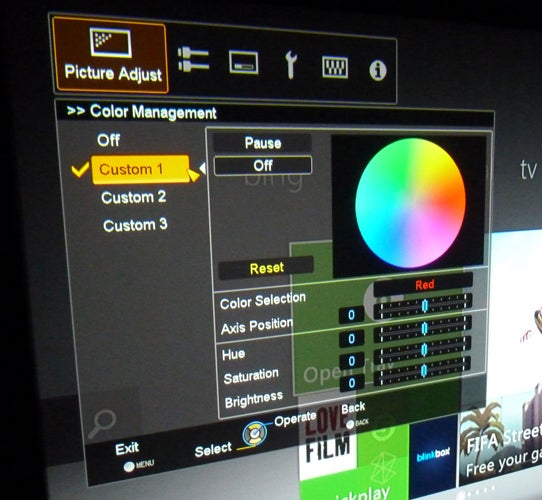
We know the system isn’t actually adding extra image data to the HD signal in any way, but simply by doubling the density of the pixels the image really does look sharper. And since there’s no upscaling involved, the e-Shifted picture looks totally natural and unprocessed.
We guess some people might not like the system’s slight tendency to emphasise grain in the picture. And just occasionally, perhaps, e-Shift goes a bit far. For instance, some high-contrast edges can look a touch harsh (though actually this could be the e-Shift system just shining an unforgiving light on edge enhancement systems used by the authors of some Blu-ray discs). Also, sometimes background objects on grainy shots – such as the backdrop behind Bond as he stands outside the Nambutu Embassy with his bomb-making captive in Casino Royale – can look a touch too “alive”.
However, for the most part we found ourselves entranced with the enhancement e-Shift brings to images, ultimately finding the resulting pictures looking more like something you might see from a monster-spec digital cinema projector at a commercial movie theatre.
The extreme contrast range of the DLA-X70 helps it produce some terrific colours too. The palette it can reproduce seems vast, as it effortlessly handles everything from the darkest of ‘real’ video tones to the most vibrant of Disney animations. There’s also immense finesse in colour shifts and blends, which contributes further to the sense of precision in the picture.
It’s also possible to get immensely natural colours out of the X70 – though it did seem to us that the presets seemed a touch yellowy out of the box, requiring a little calibration via the slightly fiddly colour management system.
It’s worth adding here that the projector is THX certified, which means there’s a THX picture preset included. This provides a decent image for people who like an accurate picture based on industry standards – though to be honest it feels a bit too warm and soft to really chime with the projector’s extreme capabilities.
While the X70 might be a gargantuan 2D performer for its money, though, it’s a somewhat less successful 3D one.
The main reason we say this is that old active shutter 3D problem of crosstalk. Some of our favourite crosstalk-revealing sequences really do present some problems for the X70. For instance, during the Golden Gate Bridge sequence in Monsters Vs Aliens, the red struts of the bridge against the bright blue sky behind show really quite obvious signs of crosstalk’s double ghosting phenomenon. You can also see shadowy echoes of the towers and spires of the Disney castle that introduces all Disney 3D Blu-rays.
It seemed, too, as if side-by-side 3D material from Sky’s 3D channel is more prone to crosstalk than alternate frame full HD Blu-ray images.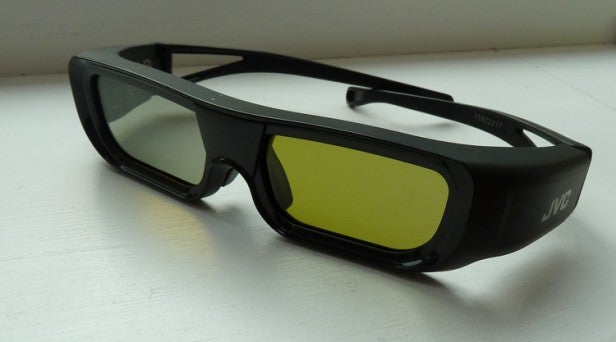
In fact, although we don’t have one of last year’s DLA-X7 models to compare with, it felt to us as if the JVC DLA-X70 maybe suffered slightly more with this sort of dark-object-on-light-background crosstalk than its predecessor. Or it could just be that the arrival of more projectors that hardly suffer with crosstalk at all since last year’s X7 has made us more critical of the issue on the X70.
There is one bit of good news here, though, as the X70 does get to grips very well with light-object-on-dark-background crosstalk. Even the infamous lantern release sequence in Chapter 8 of the Tangled 3D Blu-ray appears with only very minimal amounts of ghosting.
The X70 does carry a crosstalk reduction system for the white, red, green and blue colour elements. However, no amount of tinkering with these settings really tackled the crosstalk problem. In fact, we struggled to see them making any difference to the picture at all!
Another issue with the JVC-DLA-X70’s HD 3D pictures is that they look a tiny bit soft. Some of this might be because e-Shift ‘4k’ technology doesn’t work in 3D mode, and so the image doesn’t look as dense as the projector’s 2D images. But, motion in 3D mode is handled a little uncomfortably, with slightly distracting amounts of judder during camera pans or over very fast moving objects. And you can’t apply the Clear Motion Drive system in 3D mode.
It also seems bizarre to us that the JVC DLA-X70 doesn’t default to its 3D picture preset when it detects a 3D source – especially as all of the other presets tend to leave 3D pictures looking short of brightness, shadow detail and colour ‘pop’. (The projector doesn’t also automatically move away from the 3D preset when you go back to watching 2D.)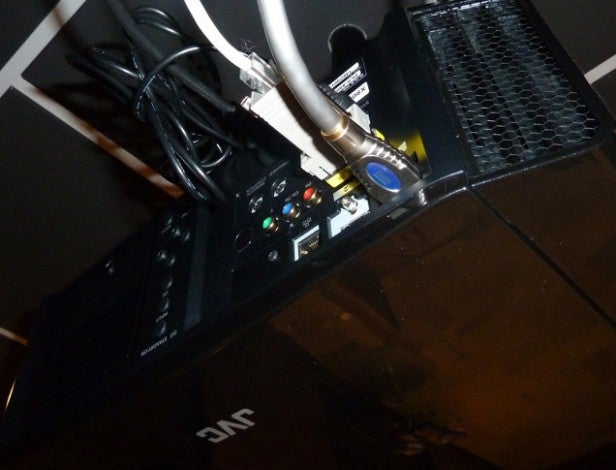
There are a couple of practical niggles about the X70’s 3D efforts, too. First, while JVC’s latest 3D glasses sit comfortably enough on your face, their lenses are quite narrow, and they don’t cover your field of vision quite as fulsomely and therefore immersively as we would like. Second, while the projector is whisper quiet with its lamp set to Normal for dark-room 2D viewing, its noise levels do ramp up quite a bit with the lamp set to high for 3D viewing.
On the upside, the X70’s 3D pictures are reasonably bright, richly-coloured, and also naturally toned – following a little tweaking of the provided colour management system. There was an initial slight yellowy green undertone that needed fixing. It also must be stressed that the crosstalk problems noted earlier are by no means omni-present; for a great deal of your 3D viewing time you won’t notice it at all.
Verdict
With other brands coming on so far with their projectors this year, we had genuine doubts whether JVC would be able to retain the edge that’s served it so well for the past four or five projector generations. But thanks to its new e-Shift technology, the X70 once again delivers a class-leading 2D performance that’s yet another step nearer to the experience of going to a real-life cinema.
The X70 is a mostly-good 3D performer too, though if JVC feels like focusing it’s next round of innovations on reducing 3D crosstalk more, that would suit us just fine.
Trusted Score
Score in detail
-
Value 8
-
2D Image Quality 10
-
Features 9
-
3D Image Quality 8
-
Design 8
Features
| Native Aspect Ratio | 16:9 |
| Projector Type | D-ILA |
| Brightness (Lumen) | 1200lm |
| Contrast Ratio | 80,000:1 |
| Full HD 1080p | Yes |
| 3D Ready | Yes |
| Max Diagonal Image Size (Inch) | 200in |
| Lamp Type | UHP |
| Lamp power (Watt) | 220W |
A/V Ports
| HDMI | 2 (v1.4) |
| Component | 1 |
| Ethernet | 1 |
Physical Specifications
| Height (Millimeter) | 179mm |
| Width (Millimeter) | 455mm |
| Depth (Millimeter) | 472mm |
| Weight (Gram) | 15.4g |

